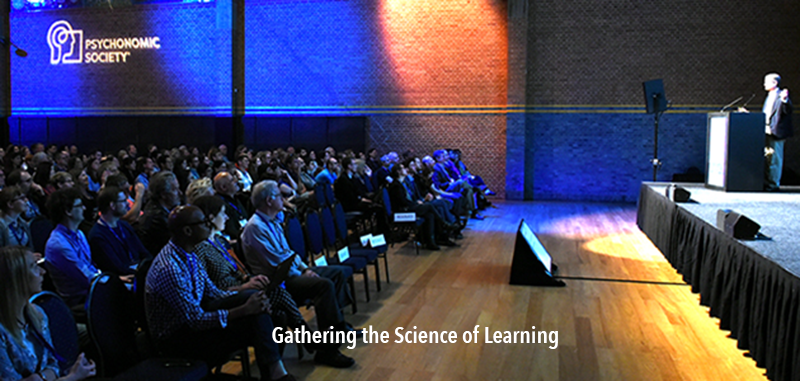Researchers from all over the world gathered in New Orleans just before Thanksgiving for the 59th Annual Meeting of the Psychonomic Society. This meeting (known as “Psychonomics”) is the premier conference for cognitive scientists to share new discoveries and provide feedback on each other’s ideas and analyses. Topics covered included spatial processing, technology in education, forgetting-curve analyses, psycholinguistics, and many more.
As the head of the research team at Amplifire, I presented findings about the impact of applying cognitive science to healthcare training. Spoiler alert: It saves lives.
The rest of my time at Psychonomics was dedicated to learning as much as I could about this year’s developments in research that could enhance our software. My team stays up to date on the core journals, and of course we’re in frequent contact with our Science Advisory Board. We also bring the SAB together for an annual meeting of our own to discuss their findings and absorb their input on how Amplifire has developed and how it can further improve.
But the thousands of scientists at Psychonomics are constantly uncovering new phenomena and extending our knowledge of cognitive mechanisms. Attendance at Psychonomics is an unparalleled source of insight for enhancing our software. This year’s presentations described new ways to measure confidence, the positives and negatives of true-false questions, methods for enhancing interactive content, strengths and weaknesses of various statistical methods…it was intense.
A recurring theme at Psychonomics is how counterintuitive the workings of the brain can be. Every year, there are dozens of presentations on the conditions that produce the best long-term learning and transfer to other tasks—and the very different conditions that learners choose when left in charge of their own learning. Dr. Robert Bjork, a member of Amplifire’s Science Advisory Board and a past chair of the Psychonomic Society, calls these counterintuitive conditions “desirable difficulties.” The desirable outcome (better learning) is produced by the challenges overcome during training. But, again, learners repeatedly interpret those challenges as harmful to learning, and select against them. It happens more than you might think. If you’ve ever dropped a flash card after getting it right once, you’ve ignored research by Dr. Henry Roediger (also a past chair of the Psychonomic Society, and another member of Amplifire’s Science Advisory Board). His work has shown that repeated retrieval is the best way to make something stick in memory.
It’s tempting to think that you can simply will your brain to behave productively—that if you can just tell it about pitfalls to which it’s prone, you can avoid them and learn effectively without the “desirable” challenges. That’s your intuition, leading you astray. To illustrate: No matter how many times you tell your brain that the circles in this image are concentric and do not overlap, your brain won’t listen. It sees spirals.

Pinna, B. and Gregory, R. L. (2002) Public Perceptions: Shifts of edges and deformations of patterns. Perception 31:1503–1508.
So you can’t tell your brain to work right. And you probably can’t be trusted to make the right decisions about how to learn—unless you’re staying up to date on the research!
What does this mean for your learning?
To us, it underscores the role technology can serve in guiding learners’ activities. To the extent that edtech incorporates scientific findings, it can serve up tasks that will be better for the outcomes learners care about (whether it’s passing an exam or managing an infection). But not all training software does this. In many cases, e-learning software is designed based on how the developers think learning works, or how it ought to work—rather than what has been scientifically demonstrated to work. Technology designed according to intuition can’t help but waste time. We see this trend in many of today’s offerings. They release features that seem great for learning—if you haven’t read the hundreds of studies that prove otherwise.
To learn more about the science behind our platform, look here. If you want to start using it, reach out here. Meanwhile, we’ll be busy incorporating this year’s discoveries to make Amplifire even better at training doctors, students, pilots, call-center agents, satellite service technicians, IT professionals, and more.


